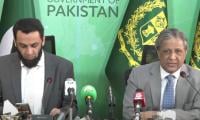Pakistan’s placement on any international index of human development has not been envious for quite some time now. The latest National Human Development Report (NHDR) of the UNDP for 2020 has reconfirmed what the common people of this country have been facing and feeling for the past many years. The difference between the richest and the poorest has been increasing rapidly, showcasing enormous inequalities in income levels. The author of the report, Dr Hafiz Pasha, presents his case that in Pakistan two different sets of people live: the richest and the poorest. The richest have a multitude of opportunities that help them in pursuit of best education and health facilities. This enables them to enjoy high-quality lifestyles and their generations after generations keep accumulating wealth. The poorest on the other extreme eke out their living from a bare minimum of resources, if at all.
The report highlights that the total privileges enjoyed by Pakistan’s most powerful groups amount to over two thousand six hundred billion rupees which is equivalent to seven percent of the country’s GDP. The most disturbing feature of these privileges is that the richest enjoy favourable pricing and lower taxations. This works as a double favour for the rich as they pay less for services that the poor can only dream of, and then the lower taxation regime also facilitates the rich in their indulgence of luxuries. This group also has preferential access to most services that are not accessible to the poor or even to middle-class families. The report has estimated that the corresponding cost of social protection programmes for the poor was just Rs624 billion rupees in 2019. It draws the conclusion that if just 24 percent of the privileges enjoyed by the richest group is diverted to the poor, it could double their benefits. The report is right in suggesting that redistribution of benefits along these lines must be the first priority for the government.
The poorest income quintile enjoys a share of just 14 per cent compared to over 37 that the richest quintile avails. Though the distribution of public expenditure appears to be less unequal, the report suggests that Pakistan needs urgent efforts to increase the public expenditure contribution to reduce inequality and raise the levels of basic social services. As of now, pension coverage is highly restricted to the civil and military bureaucracy and does not include large numbers of common people, making them extremely vulnerable in their old age. There is a need to widen the coverage of pension schemes. This vast divide between the richest and the poorest results in poorer housing, poorer education, poorer healthcare and a far poorer quality of life for those at the bottom of the ladder. The situation can change only through more equitable taxation, including better taxation of agricultural wealth and programmes which can deliver what the poor need most in order to gain opportunity in life.
The government must take the findings and recommendations of the report seriously and ensure appropriate steps. It must focus on income generation opportunities for the lower and lower-middle income groups which are the most stressed now. There is a need to check the negative long-term impact of the declining human development indicators in the country. The fact that the poorest one percent of the population holds only 0.15 percent of national income and the richest one percent holds nine percent should be cause of concern for the decision makers in Pakistan.
Every year, millions of girls silently say goodbye to their education and the promise of a better career and get married
Ruling party emerged victorious in by-elections and as per unofficial results has won at least two out of five NA...
According to its organizers, the event now brings together around one billion people across 200 countries every April...
Pakistan’s nuclear programme, it would have threatened peace in the region because of its hegemonic designs
PHF should take comprehensive steps aimed at bringing improvement in the quality of our players
Since its ascent to power in 2014, the BJP, under the leadership of Indian Prime Minister Narendra Modi







